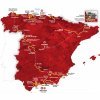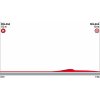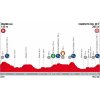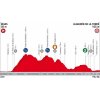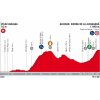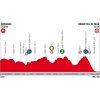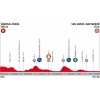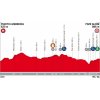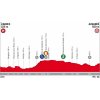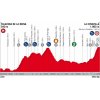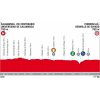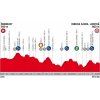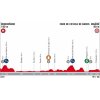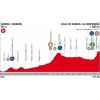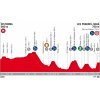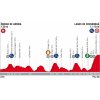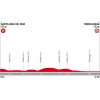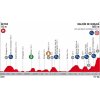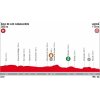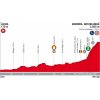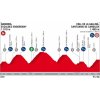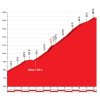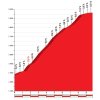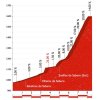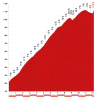The Vuelta a España is set to start with an individual time trial of 8 kilometres. The riders roll down the ramp at the Centre Pompidou Málaga and tackle a punchy climb halfway.
The 2nd stage runs from Marbella to a finish near the Caminito del Rey. It’s the first uphill finish on La Vuelta, although the slope is tolerable – 5.1 kilometres at 3.3%.
Stage 3 is played out in the hills above Torremolinos, but the finale is on the flat. In the 4th stage the race moves through Nerja, Almuñécar and Otívar, which means a climb up the ‘Carretera de la Cabra’. The race ends with a 12.4 kilometres climb in the Sierra de la Alfaguara, just north of Granada.
Stage 5 runs from Granada to a flat finish in coastal town Roquetas de Mar before the 6th stage brings another finish at the Mediterranean Sea. Both offer rare chances for La Vuelta’s fast men.
The 7th stage travels to a challenging finale in Pozo Alcón with two climbs in the last 12 kilometres, while the 8th stage travels on rolling roads to another likely bunch sprint in Almadén.
The first week of action closes with the first proper challenge in the high mountains. Stage 9 route takes in two intermediate climbs before a summit finish in ski resort La Covatilla. The last 24 kilometres are virtually all uphill, while the actual climb amounts to 7.8 kilometres at 8.5%.
Week 2
Following the first rest day, La Vuelta continues with a leg from Salamanca to Bermillo de Sayago, close to Portugal, which should suit fast finishers. The 11th stage is altogether different as the route is nowhere near flat and runs to a challenging finale with a 2 kilometres climb at 7.5%, an ensuing drop, and a false flat arrival. Stage 12 travels to Estaca de Bares, the northernmost point of Spain, where the finale is pepped up by a string of short climbs and narrow roads.
From Friday, September 7th, onwards the Spanish Grand Tour regales the mountain goats with three days of action on their preferred terrain. Stage 13 travels over a huge intermediate mountain before a summit finish at the iconic mountain La Camperona – as it did in 2014 and 2016. The final haul up amounts to 8.8 kilometres and the last 2.1 kilometres are averaging a whooping 15%. The 14th stage kicks it up a notch with a race over four climbs and an unprecedented finish at Les Praeres de Nava. The climb in the Sierra de Peñamayor is a 4 kilometres torture with an average gradient of 12.5%.
Stage 15 sets off in Ribera de Arriba and the finish is near the iconic Lagos de Cavadonga. The climb to the lakes is 12.2 kilometres at 7.2% – a statistic that’s biased by a 1 kilometre drop just before the summit, after which the dying metres of the race slope at 7.5%. Two editions ago, Nairo Quintana pocketed the stage honours at Lagos de Covadonga.
Week 3
La Vuelta’s final week begins with a demanding individual time trial of 32 kilometres before stage 17 finishes at Mount Oiz, a peak that has never been included in the race. Following a hilly race the ultimate climb amounts to 7.1 kilometres with the second half sloping at 11%.
Catalunya hosts a sprinters friendly arrival in Lleida on stage 18 before La Vuelta heads into the Pyrenees for the last two days of climbing. The 19th stage travels into the neighbouring microstate Andorra. The route runs almost entirely on a false flat to the foot of the Coll de la Rabassa, which is a 17.5 kilometres climb with an average gradient of 6.3%. Stage 20 will be entirely played out in the Principality and takes in five intermediate climbs to culminate at the Coll de la Gallina, a 7.7 kilometres climb at 7.8% with double digit switchbacks just before the summit.
The 2018 Vuelta a España concludes with the traditional parade stage in Madrid.
Vuelta a España 2018: Route map, height profiles, and more
Click on the images to zoom
